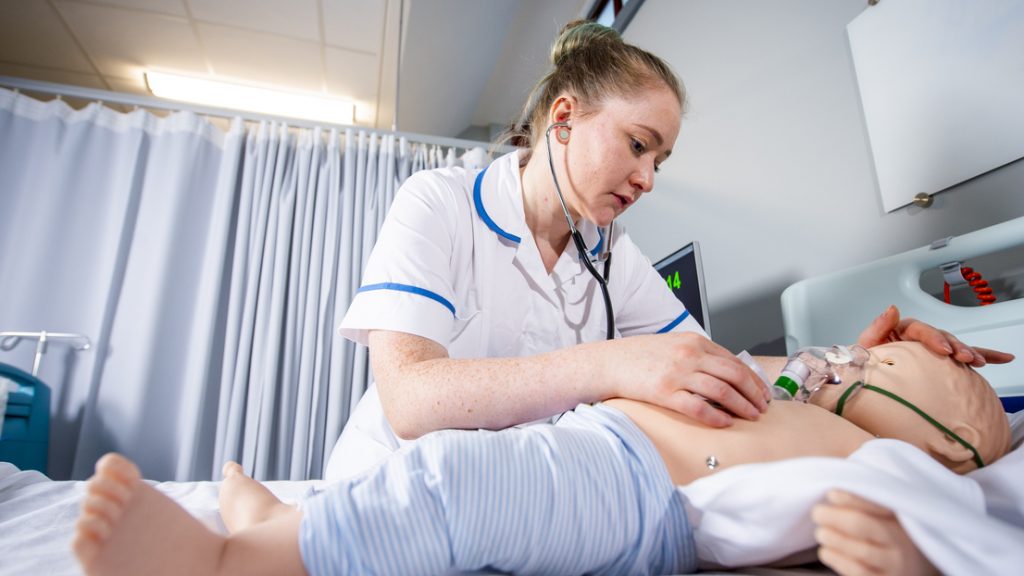Research undertaken by Oxford Brookes University has led to the production of new prenatal diagnostic and screening tests, now received in routine clinical practice by tens of millions of women worldwide.
One such test developed a method to measure the two forms of the reproductive hormone, inhibin: A and B. Inhibin A measurement has been used in prenatal screening for Down’s Syndrome, and the higher accuracy of screening has meant that fewer women required amniocentesis, an invasive procedure which risks causing a miscarriage. The test for in hibin B, made in men, is in use as a marker of sperm count. Both of these tests are used in fertility studies and diagnosis of inter sex disorders. This research later led to the current clinical tests for another reproductive hormone known as AMH (anti-mullerian hormone). This is widely used in IVF clinics to measure how many eggs women have remaining, thus allowing clinicians to identify which women would most benefit from IVF treatments. The current group of inhibin A, inhibin B and AMH tests used in hospitals, and much of the research about understanding these molecules, has depended on the antibodies made at Oxford Brookes University.
hibin B, made in men, is in use as a marker of sperm count. Both of these tests are used in fertility studies and diagnosis of inter sex disorders. This research later led to the current clinical tests for another reproductive hormone known as AMH (anti-mullerian hormone). This is widely used in IVF clinics to measure how many eggs women have remaining, thus allowing clinicians to identify which women would most benefit from IVF treatments. The current group of inhibin A, inhibin B and AMH tests used in hospitals, and much of the research about understanding these molecules, has depended on the antibodies made at Oxford Brookes University.
During his highly successful research career at Oxford Brookes, one of Professor Groome’s greatest research achievements resulted from work which led to the development of antibodies to the reproductive hormone inhibin.
This research led to the development of the first clinical immunoassays, or tests, for inhibin A, inhibin B, inhibin pro-alpha c and activin A.
Because of Professor Groome’s leading role on this research, he is widely recognised as being responsible for major developments in the understanding of aspects of human reproduction relevant to inhibin A and B.
Irrespective of the database searched, Professor Groome will be found to be the most published and most cited author in the inhibin field.
Inhibin use in the USA
The greatest use of the inhibin A procedure for Down’s Syndrome screening has been in the US. The 2012 College of American Pathologists report shows that most respondent clinics use the second trimester quad test with a significant number using the full integrated test. The total usage of the quad or integrated test in 2011 in the US was over 3 million women screened.
It can easily be deduced that the inclusion of inhibin A in the screening for Down’s Syndrome has contributed to a significant cost-saving for healthcare in the US. We can estimate that lifetime care costs of a Down’s Syndrome child would be around $900,000 per child. The 5% gain in detection as result of adding inhibin-A therefore translates into a potential saving of over $250 million per year.
Given the current trend for women to choose to have children later, where there is a high correlation between increasing maternal age and increased instances of Down’s Syndrome, this will only become a greater saving.
Greater accuracy of screening
There are also health implications because the amniocentesis procedure carries a 0.5-0.8% chance of provoking a miscarriage; the greater accuracy of the screening means that fewer women have to take that risk.
In the UK, the quad test became the recommended standard of care for second trimester screening in 2010 and is now offered by all but 3 of over 160 NHS trusts. In the period April 2011 to September 2011, Quad and integrated testing increased and accounted for 72.8% of all second trimester tests compared with a previous cycle rate of 49.7%.
Read more about the full Impact Case Study on RADAR. Further information on Professor Nigel Groome can be found on his profile page.




